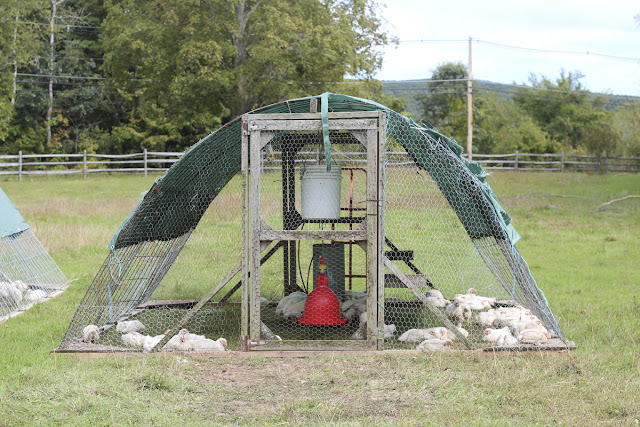 This past Saturday we took a beautiful morning hike through the just-turning Berkshire hills. It wasn't until we arrived home famished that we realized we'd missed the Great Barrington Farmer’s Market- which, while it’s one of our favorites, has pretty limited hours. Luckily, Western Mass is full of farms with convenient shops right at the source, so we jumped in the car and drove down to our friend Sean Stanton’s North Plain Farm.
This past Saturday we took a beautiful morning hike through the just-turning Berkshire hills. It wasn't until we arrived home famished that we realized we'd missed the Great Barrington Farmer’s Market- which, while it’s one of our favorites, has pretty limited hours. Luckily, Western Mass is full of farms with convenient shops right at the source, so we jumped in the car and drove down to our friend Sean Stanton’s North Plain Farm.
There
are a lot of amazing farmers in the Berkshires- and as time goes by you'll be introduced to most of them- but Sean is one of our favorites. He is a young and tireless farmer who we got to know because Jake’s brother Sam worked on his farms throughout high-school. Besides North Plain Farm
which he owns and runs on his parents' property in Great Barrington, he
manages Blue Hill Farm for the internationally
famous locavore chef Dan Barber, in Monterrey, MA. That's right, two farms!
Sean joined the US Coast Guard after school, realizing in just a few years that rather than serve ‘"his country" he wanted to serve
the
community that raised him. So he moved back to Western Mass and started a
small farm on his parents' property. All of his
livestock - chickens, pigs, lamb,
and cows - are pasture raised. He feeds them with organic feed, rotates
pastures frequently and always has one kind of animal cleaning up after
another. He is now a Town Selectman, a pillar of the community, and a
prime model for he future of successful sustainable farming.
Like
most active farms, North Plain Farm is not the beautiful
pastoral sight you might see in Sauveur or Town & Country. As you pull
into the lot you are greeted by Marie the retired farm dog, as she
runs around rusty tractor
parts waiting to be refurbished, empty milk crates, and a chicken
slaughtering trailer used the day before. (P.S. those chickens were GOOD!) Broilers
wander around in
their hoop houses, and large heritage breed pigs (Tamworth, Large
Black, Berkshire, and Gloucestershire Old Spot) wallow in mud and eat
rotten apples along side the cutest piglets ever. Tomatoes grow in
weather-beaten hot houses and apprentices busily run around taking care
of their respective tasks.
 When people find out about our plans to move to the country and start a small farm, often they imagine our lives as leisurely gentleman farmers. But by visiting North Plain Farm and talking with Sean, it's easy to see that real farming is not a glamorous or romantic - and sometimes not even fun - job. Sure, we'll be escaping our 9-5 office jobs, but we will be entering the 24-7 life of maintaining land and livestock.
When people find out about our plans to move to the country and start a small farm, often they imagine our lives as leisurely gentleman farmers. But by visiting North Plain Farm and talking with Sean, it's easy to see that real farming is not a glamorous or romantic - and sometimes not even fun - job. Sure, we'll be escaping our 9-5 office jobs, but we will be entering the 24-7 life of maintaining land and livestock.For us, the most important thing to take from Sean's example is how clearly his hard work pays off. He is providing an example for future farmers, feeding his neighbors with healthy, well-raised food, and is actively involved in local politics, helping to create laws that protect land. And once in awhile he can sneak away with his girlfriend to one of the best restaurants in NYC to be served food he produced - even if he still has to run back the same night to milk cows at 4am.
















